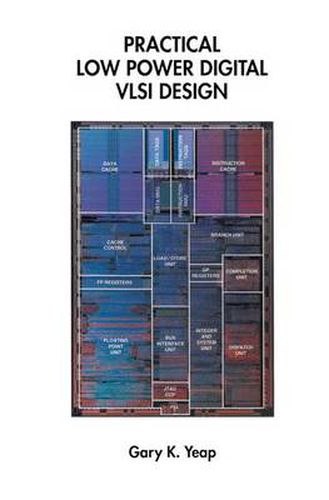Readings Newsletter
Become a Readings Member to make your shopping experience even easier.
Sign in or sign up for free!
You’re not far away from qualifying for FREE standard shipping within Australia
You’ve qualified for FREE standard shipping within Australia
The cart is loading…






This title is printed to order. This book may have been self-published. If so, we cannot guarantee the quality of the content. In the main most books will have gone through the editing process however some may not. We therefore suggest that you be aware of this before ordering this book. If in doubt check either the author or publisher’s details as we are unable to accept any returns unless they are faulty. Please contact us if you have any questions.
This text emphasizes the optimization and trade-off techniques that involve power dissipation, in the hope that readers will be better prepared the next time they are presented with a low power design problem. The book highlights the basic principles, methodologies and techniques that are common to most CMOS digital designs. The advantages and disadvantages of a particular low power technique are discussed. Besides the classical area-performance trade-off, the impact to design cycle time, complexity, risk, testability and reusability are discussed. The wide impacts to all aspects of design are what make low power problems challenging and interesting. Heavy emphasis is given to top-down structured design style, with occasional coverage in the semicustom design methodology. The examples and design techniques cited have been known to be applied to production scale designs or laboratory settings. The goal of the book is to permit the readers to practice the low power techniques using current generation design style and process technology. The text considers a wide range of design abstraction levels spanning circuit, logic, architecture and system. Substantial basic knowledge is provided for qualitative and quantitative analysis at the different design abstraction levels. Low power techniques are presented at the circuit, logic, architecture and system levels. Special techniques that are specific to some key areas of digital chip design are discussed as well as some of the low power techniques that are just appearing on the horizon.
$9.00 standard shipping within Australia
FREE standard shipping within Australia for orders over $100.00
Express & International shipping calculated at checkout
This title is printed to order. This book may have been self-published. If so, we cannot guarantee the quality of the content. In the main most books will have gone through the editing process however some may not. We therefore suggest that you be aware of this before ordering this book. If in doubt check either the author or publisher’s details as we are unable to accept any returns unless they are faulty. Please contact us if you have any questions.
This text emphasizes the optimization and trade-off techniques that involve power dissipation, in the hope that readers will be better prepared the next time they are presented with a low power design problem. The book highlights the basic principles, methodologies and techniques that are common to most CMOS digital designs. The advantages and disadvantages of a particular low power technique are discussed. Besides the classical area-performance trade-off, the impact to design cycle time, complexity, risk, testability and reusability are discussed. The wide impacts to all aspects of design are what make low power problems challenging and interesting. Heavy emphasis is given to top-down structured design style, with occasional coverage in the semicustom design methodology. The examples and design techniques cited have been known to be applied to production scale designs or laboratory settings. The goal of the book is to permit the readers to practice the low power techniques using current generation design style and process technology. The text considers a wide range of design abstraction levels spanning circuit, logic, architecture and system. Substantial basic knowledge is provided for qualitative and quantitative analysis at the different design abstraction levels. Low power techniques are presented at the circuit, logic, architecture and system levels. Special techniques that are specific to some key areas of digital chip design are discussed as well as some of the low power techniques that are just appearing on the horizon.